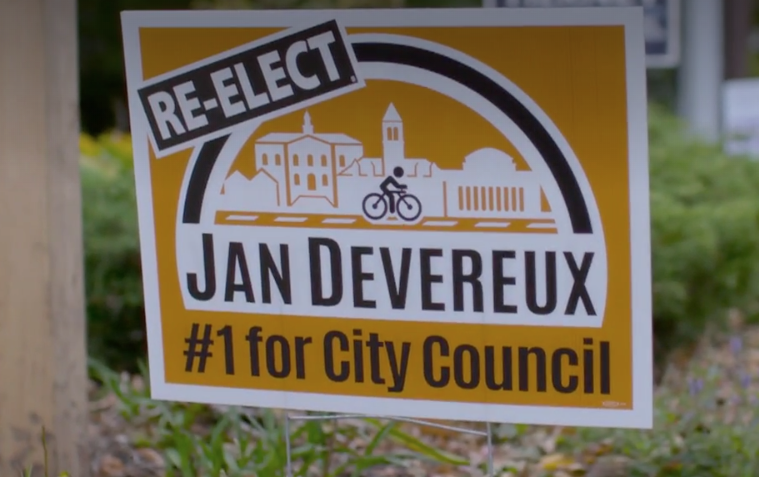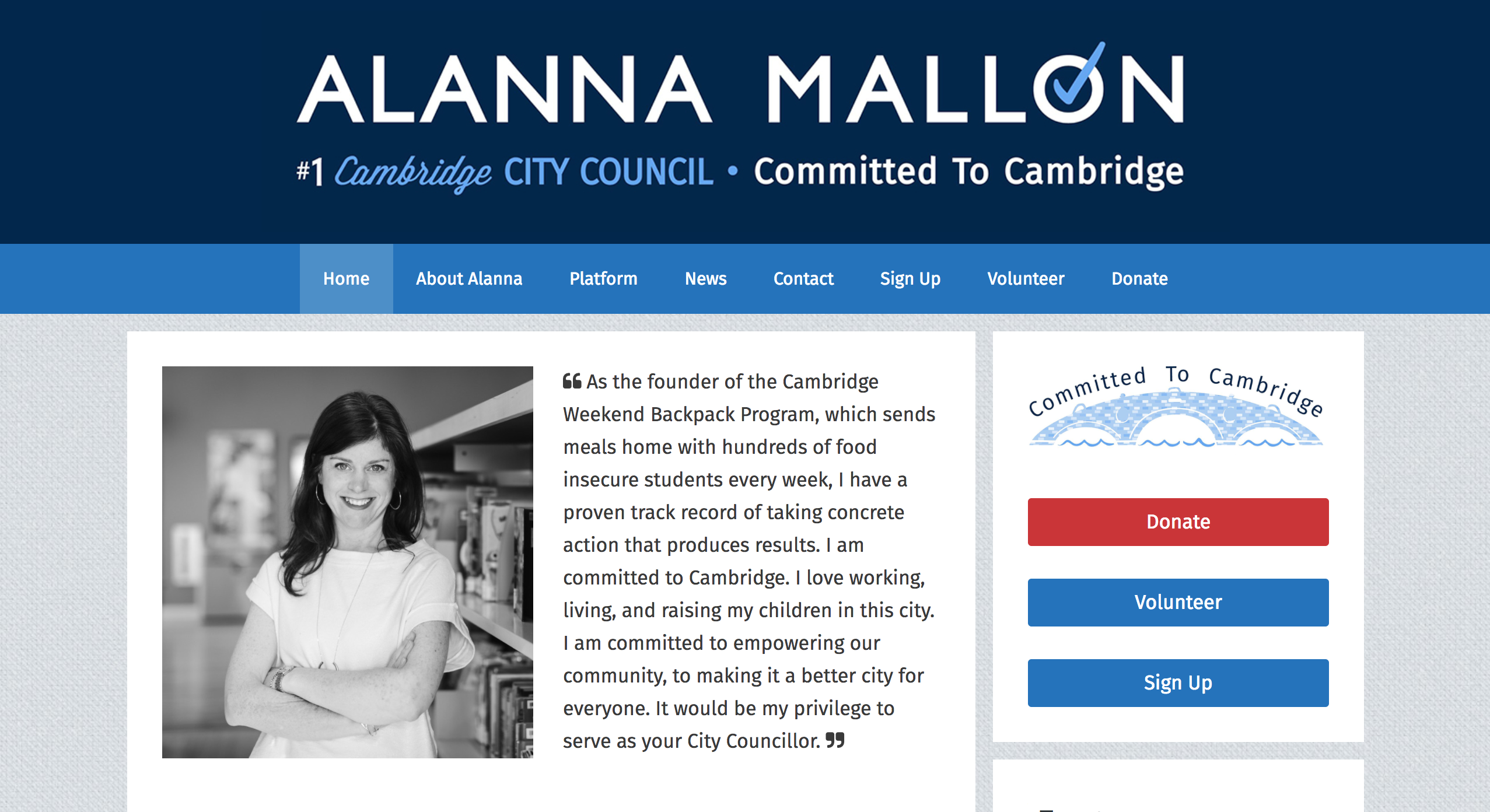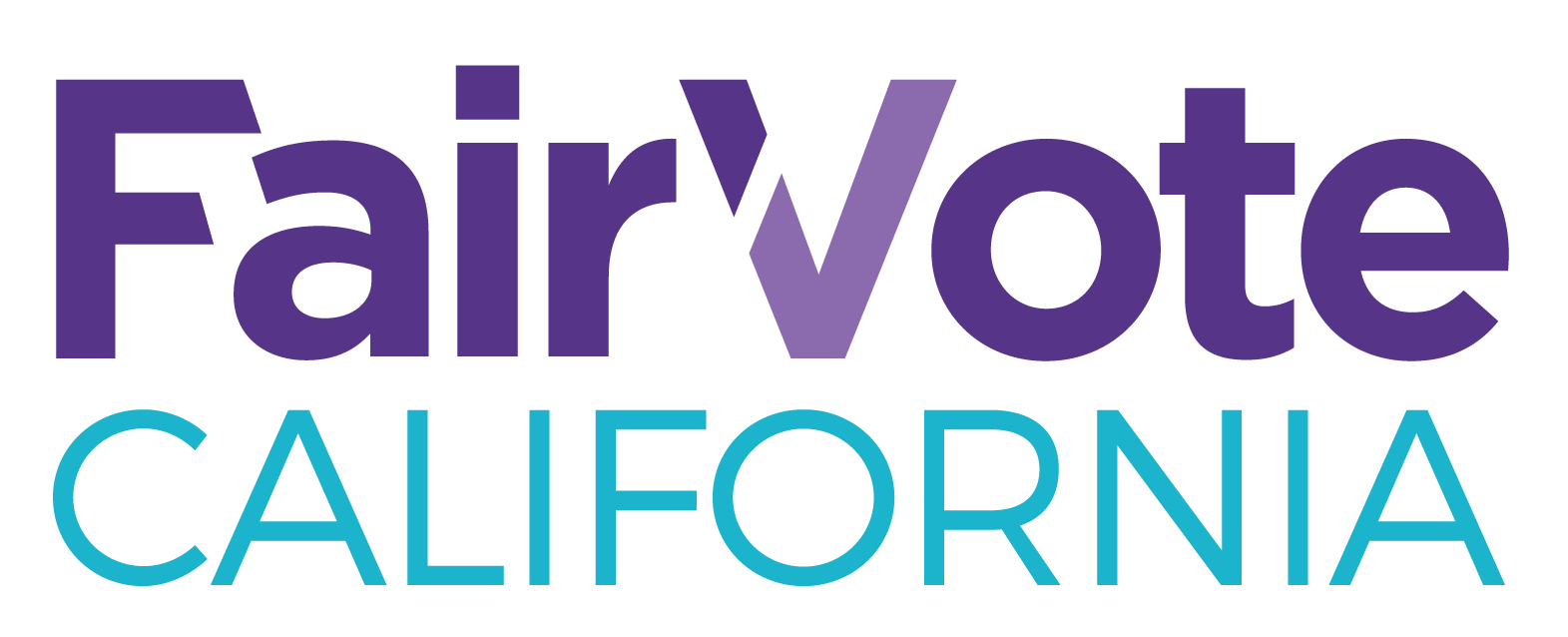For more comprehensive information and examples download our tips for candidates handout.
Tip 1: Ask Voters Specifically for their First-Choice Vote

With RCV in a single-seat contest, it’s impossible for a candidate to win with just second-choices votes even if every single voter ranks that candidate second.
Use phrasing like “Make Candidate X your first choice for [office]”, or “Give your first choice to Candidate X.”
Even if you think you could win by receiving the winning threshold of the first choices, pursue second and third choices by reaching out to supporters of other candidates to secure a broad base of support to win.
The first-choice votes are most important in determining the winner, and you should be explicit in asking for this level of support. While a candidate may need some second and lower rankings in order to ultimately win, it is mainly first-choice votes that determine which candidates get into the final runoff count. Second and third preferences may be necessary, but first preferences are always essential.
Also, using this language when talking to voters who already support you can help clarify any questions your supporters might have about the RCV process or filling out their ballot. Having your supporters rank their ballot can’t hurt you, but encouraging voters not to rank can make it more difficult for you to gain lower-choice votes.
Use this language in your campaign materials!
In cities where RCV is used, campaign materials specifically ask people for their first choice vote. You want people to rank you #1, and if they won’t do that, to rank you #2. “Can I count on your first-choice vote? If you’re committed to another candidate, please consider giving me your second choice.”
RCV also provides an opportunity to gain support from a voter from a second conversation who has previously confirmed their first choice support for a different candidate. If you think there is a chance there will no majority winner from first choices alone, consider what you share in common with any of your opponents and what messages might appeal to their supporters If you have tracked which voters were undecided on a second choice in your first conversation, this is a valuable group to prioritize reaching out to again.
You may wish to publicly disclose your personal #2 and #3 rankings, or even explicitly ask supporters of those candidates to rank you #2 or #3. Endorsing organizations commonly indicate their #1, #2, and #3 rankings.
Tip 2: Map Your Route to 50%

Winning a RCV election outright requires that a candidate receive a majority (at least 50% +1) of valid votes. If no candidate is the first choice of a majority, an “instant” runoff is triggered – instant in that the voters do not need to return to the polls to determine the winner.
With RCV, every voter gets one vote – and no more. Some have suggested that RCV gives some voters two votes -- this is NOT TRUE. A voter never has their ballot count for more than one candidate at a time. A voter’s ballot will only count for a first choice if that candidate still has a chance to win. Your vote will count for a lower choice if your top-ranked candidates have lost.
In a close RCV contest, a candidate needs to do well in first choices and then receive additional votes from being a second or third choice of voters who preferred defeated candidates. We encourage all candidates to reach out to various communities of voters to secure their support as a second or third choice. Evidence suggests that the best way to accomplish that goal is direct voter contact -- door-knocking, phone banking, community meetings, and other tactics where voters build relationships with the candidate.
As a candidate seeking to win, two important questions to ask yourself are:
1) “How can I maximize my first choices?” and,
2) “How can I be the second and third choices of people who rank other candidates first?”
Here’s what Minneapolis 4th Ward Councilmember Phillipe Cunningham said in a press conference about his 2016 race, when he earned a victory by winning with far more second and third-ranked support support from backers of defeated candidates:
“My favorite thing about ranked choice voting is that it allowed me to build relationships across bases. It wasn't just "either or." Ranked choice voting also allowed my campaign, for us, to be able to remain rooted in our values. From day one, I wanted my campaign to demonstrate the type of Councilmember that I will be. That is, to operate with integrity and be collaborative. Rather than getting caught up in the divisiveness that we typically see in traditional elections, I was able to build power and relationships across differences all across the Ward. We have a really diverse Ward in the 4th Ward.”
How Tracking Can Help You Measure This
Making a point to ask voters about their plan for a second- and even third-choice vote can help you greatly, especially when they indicate that their first choice vote will go to another candidate. A careful effort to collect this information about lower-choice preferences consistently throughout your voter contact activities can help you estimate how you may perform beyond the initial count of first-choice votes. If you have the resources, conducting a more systematic poll with questions about first-, second- and lower-choice votes can give you a clearer picture of this as well. The earlier you can begin to identify these trends, the more effectively you can tailor your campaign activities to secure these lower-choice votes.
Tip 3: Use RCV Messaging on Your Website

RCV Messaging and Your Campaign Materials, Website, and Social Media
In addition to your campaign materials, your website and social media channels are an easy place to include an explanation of RCV to make sure your supporters understand the importance of giving you their first choice vote. Your website may already include other resources on voting information for your supporters and a quick explanation of RCV is a useful addition to this.
Tip 4: Ask for Second and Third Choice Support

Why ask for more than first choices
While your campaign is likely focused on maximizing the critical first choices, in a multi-candidate race, it may be necessary for your campaign to also actively seek second and even lower choices. If you don’t make it above 50% with first choices, support from voters’ second and lower choices will be required for you to win. If another candidate outworks you for support among the lower choices, you can still lose the election even if you secure a plurality of the first choices. Read the story of the 2010 race for mayor in Oakland to understand the strategy of inning lower-choice votes.
How to ask for lower-choice votes
If you want people talking to voters on behalf of your campaign to make an effort to secure second choices, it will likely take specific instruction. Experienced volunteers and campaign workers should be familiar with the process of asking for first choices but may be used to ending the conversation after encountering a voter who supports a different candidate. Scripts and training on this process may be necessary.
If you have a system in place to track who a voter supports as their first choice, it should be easy to add in the option to record a second choice. Tracking this should help you evaluate how the vote counting might play out if you are unable to secure a majority of votes in the initial round.
You may also want to think about what you share in common with any of your opponents and what different messages will appeal to their supporters. It is possible that a separate message might be needed to win a second choice depending on who the voter has decided on for a first choice.
Not all second choices are of equal value to your campaign
Although you can only stand to benefit from asking for the second choice from voters set on a different first choice, it is important to keep in mind that the value of a pledge for second-choice support varies by their top preference. The earlier you anticipate one of your opponents is likely to be eliminated in the counting, the more likely it is that their supporters’ second choices could be activated in your favor. Similarly, your campaign should not place as high a value on earning second choices from voters whose first choice is likely to remain active in the final count.
Tip 5: Include an RCV Election at Your Next Event

If you want to have your supporters practice ranked choice voting, consider holding a RCV election at your next candidate event! We can agree on what to vote on beforehand (best appetizer, best dessert, etc.). This provides a fun activity for attendees and an opportunity to make sure your supporters understand RCV. If you have an event, contact us at [email protected].
Tip 6: Use Candidate Forums to Build Bridges
When candidate forums start getting scheduled, consider the implications of RCV on these events.
More to Gain from Common Ground
For races where you might face two or more other candidates in these forums, RCV should provide more value in finding agreement or common ground. Especially when you consider that many voters attend these events with a predetermined first choice, these forums should be an effective place to aim to pursue second choices. While you still might benefit from emphasizing points of contrast, RCV should give you more to gain when presented with a genuine opportunity to agree with other candidates.
Consider the Downside of Attacks
If you are considering this strategy be sure to think about the potential cost in second-and-lower-choice support. An attack on your leading opponent might adversely change how supporters of a third candidate will evaluate you as their possible second choice.
Make a Specific Appeal for Second Choices:
While most of your campaign activities are geared toward finding new first-choice supporters, attendees at these candidate forums often arrive already set on a first choice. More so than in other situations, this can make these forums more productive venues for direct appeals for second choices. If you are given the opportunity for both an opening and closing statement, it could be to your benefit to focus one on attendees who are using the forum to decide on a second or lower choice.
Tip 7: Encourage Ranking
“Bullet Voting” Won’t Help You Win, But Suggesting It May Make You Lose
Some candidates mistakenly believe that if their supporters rank a second or third choice, this might somehow dilute the strength of that voter’s first preference or somehow hurt the chances of that favorite candidate getting elected. That dynamic can occur in a traditional at-large election where more than one candidate wins, but it is not the case with ranked voting. Under RCV, ranking backup choices can never hurt the chances of a voter’s first choice.
If a voter has ranked you first, that ballot will only count as a vote for you and provide no benefit to any other candidate as long as you’re still in the running. The backup choices marked on a ballot are only considered if you, as their first-choice candidate, have been eliminated and are not in the RCV runoffs. If you’ve been eliminated, it can’t help or hurt you if your supporters’ ballots indicate backup choices for the RCV count.
If your campaign urges your supporters not to rank alternate choices, you run the risk of discouraging backers of other candidates to not rank you as a backup choice as well.
How Advocating Ranking Can Help You
Some campaigns see strategic value in actively encouraging voters to rank a certain other candidate second – as a way of suggesting that supporters of that candidate might be wise to rank you as their second choice. But even then, it is wise to find connection with backers of all candidates who may be eliminated and have their votes go to a backup choice.
Tip 8: Reach out to Voters a Second Time

If your campaign has been measuring your support through your voter contact effort, RCV adds an additional dimension for consideration as you might begin to reach some of these voters for a second time.
More Depth to the Breaking of Undecided Voters
In a traditional election, a key measure campaigns may track when reaching voters for the second time is the rate at which previously undecided voters are now supportive. In a multicandidate race, it could benefit you to analyze not only the rate at which previously undecided voters now plan to you support you with a first choice, but also which voters have settled on a different first choice but will rank you as their second or lower choice. As discussed previously, these new lower choices will vary considerably in their value to your campaign depending on how you evaluate the strength of your opponents.
A Second Pass for Second Choices
RCV also provides an opportunity to gain from a second conversation with a voter who was previously firm in their first choice support for a different candidate. Especially if there is an opponent you anticipate could be eliminated early in the counting, a continued effort to secure their supporters’ second-choice support might be worthwhile. If you have tracked which voters were undecided on a second choice in your first conversation, this also could represent a valuable group to prioritize reaching again.
Questions?
Email us at [email protected]

